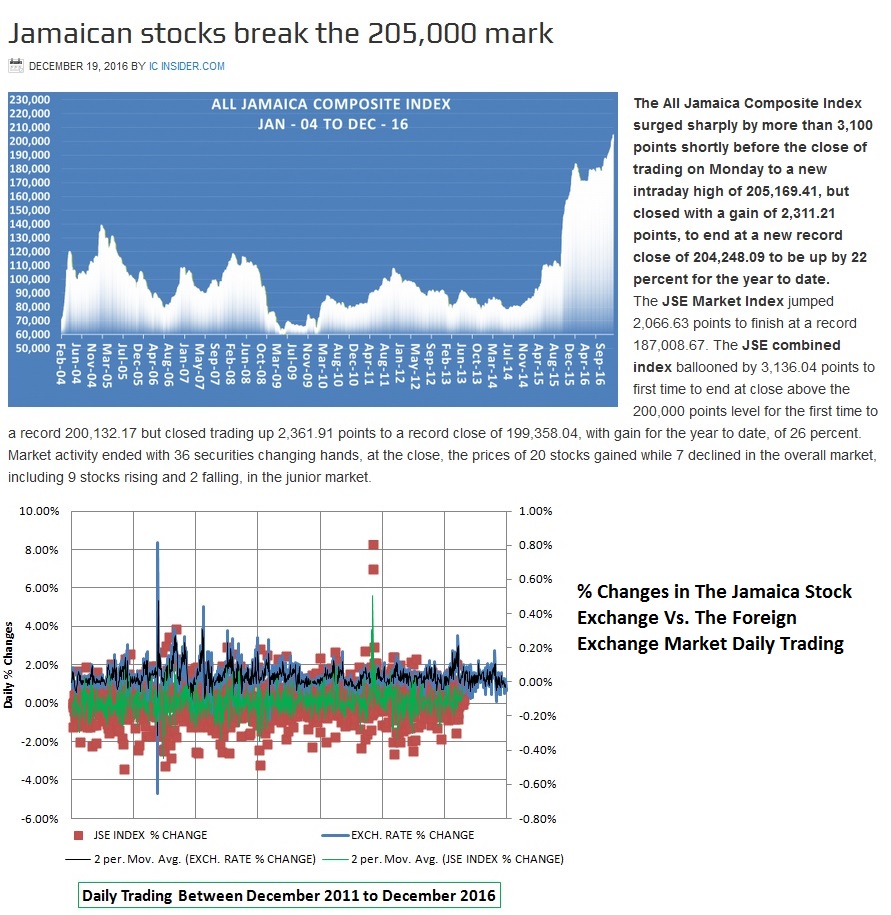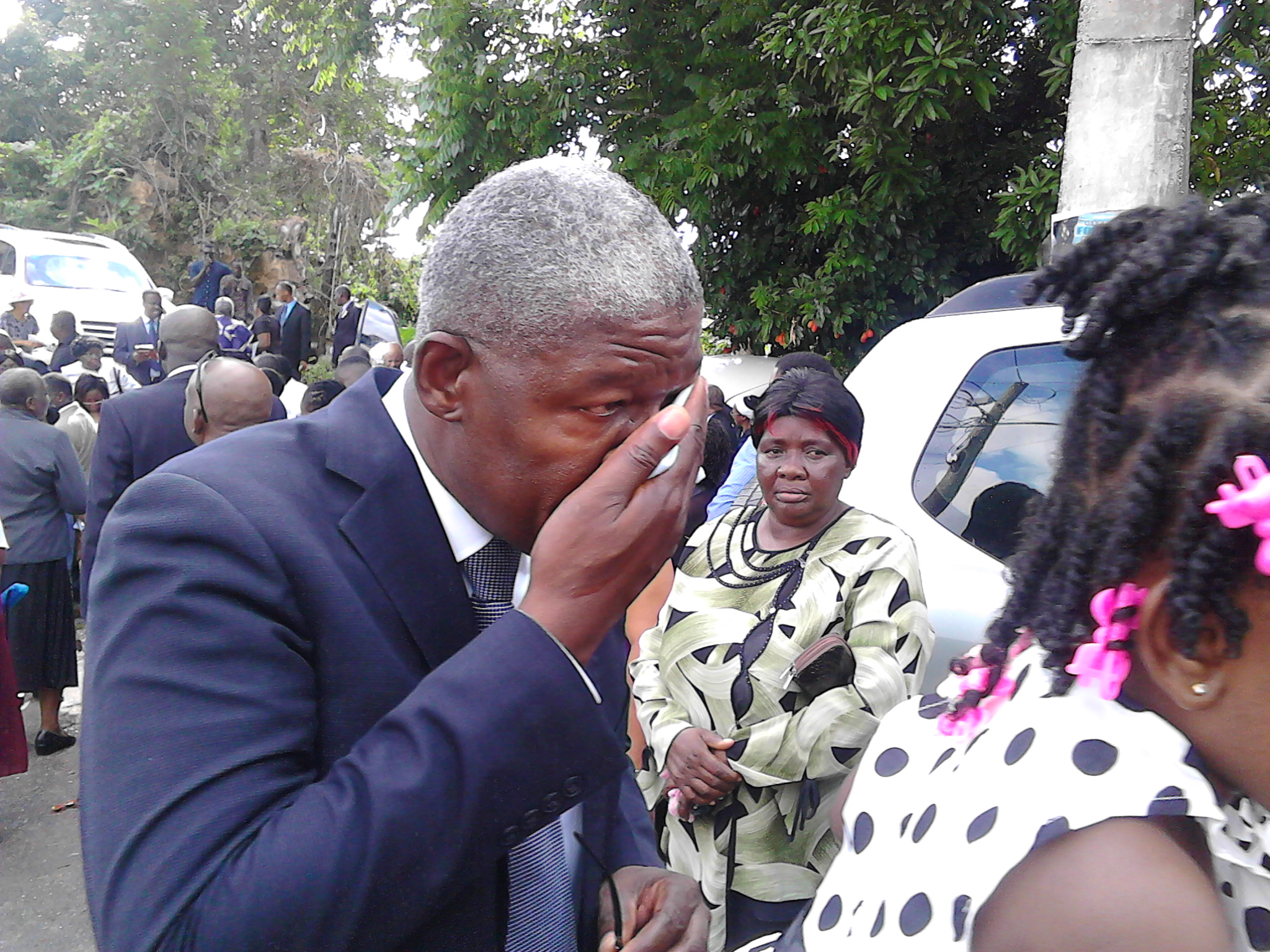THE FLIGHT OF CAPITAL FROM THE FOREIGN EXCHANGE MARKET INTO THE JAMAICA STOCK MARKET (JSE) IS SUPPORTED BY GOVERNMENT POLICIES.
 Since April of 2016, the Bank of Jamaican (BOJ) sold well over US$600 million to the foreign exchange market only to achieve the short-term stability that we are now witnessing in the dollar moving from US$1=129.69 to 128.78 Jamaican. This US$600 million sold to Bankers and Foreign Exchange Dealers are not being invested in the JSE creating a surge in the All Jamaican Composite Index (see chart).
Since April of 2016, the Bank of Jamaican (BOJ) sold well over US$600 million to the foreign exchange market only to achieve the short-term stability that we are now witnessing in the dollar moving from US$1=129.69 to 128.78 Jamaican. This US$600 million sold to Bankers and Foreign Exchange Dealers are not being invested in the JSE creating a surge in the All Jamaican Composite Index (see chart).
In Jamaica, the macroeconomic consequences of Direct Remittance Investments (DRI) have given rise to a fiscal and monetary policy framework in which investors will generally rush to optimize their equity returns or portfolio values by purchasing stocks when some appreciation or stability in the Jamaican dollar is achieved with BOJ intervention. This pushes the stock market index upwards as US$ sales to investors at lower market rate are invested in stocks values that were made more attractive as a result significantly devalued Jamaican dollar.
As the Jamaican Dollar appreciates further stock market capitalization will continue to a point where portfolio returns are maximized. At this point investors will then cash-out their gains causing the index to correct as the normal market levels and the increase portfolio gains converted into US$ will be sold back to the BOJ at the higher exchange rate to force even further devaluation to attract more tourism foreign direct investments. It could be for this reason Holness went to Florida to solicits more tourism investment ahead of an anticipated deeper slide in the Jamaican dollar after this short-term stability we are now experiencing.
“The Bank of Jamaica (BOJ) for instance often intervene in the market by selling US dollars outside of the normal market value after periods of market instability from speculative transactions. Short-term market stability is often achieved followed with rapid depreciation as dealers resold accumulated foreign currency to the central Bank at rate allowing Jamaican dollar liquidity.”
The exchange of portfolio values between the Stock and Exchange Rate Markets is tightly held within a band or asymmetry of investment returns ranging from 11%-19% when annualized and could result in total portfolio earnings of up to 30% on investments having a mix of foreign currency and equity. This asymmetrical trading within a closely confined range of investment returns is supported by frequent intervention in the currency exchange market to manage the appreciating effects on the local currency from the ever increasing remittance investments in a so-called effort to make liquidity adjustments outside of the normal market operation
“While market interventions in developed countries are intended to maintain the value of their currency relative to a foreign currency within a stated band to rationalize international trade and investment, however, this is not a policy of the Bank of Jamaica (BOJ) to target a specific value of the exchange rate.”
It would appears then that market intervention to force liquidity at new level of depreciation in the domestic currency outside normal market resets only serves to counteract the appreciating effects of DRI resulting in increased spreads and asset values within the foreign currency exchange market and the local stock exchange in order to attractive Foreign Direct Investments (FDI) largely in the tourism and financial sectors.



